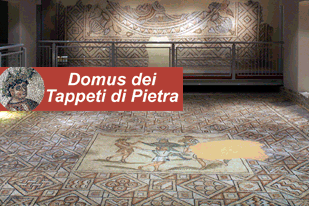The style of Ravenna's mosaics.





The style of Ravenna's mosaics. Hotels near the mosaics.
Images:1)Battistero Neoniano,2)Mausoleo Galla Placidia,3)S.Apollinare Nuovo,4)S.Vitale,5)S.Apollinare in Classe
Mosaics, even contemporary ones, play a fundamental role in Ravenna's history of art.
And so we would like to share some words by Prof. Farioli about the style of Ravenna's mosaics while pointing out the nearest hotels to Ravenna's mosaics to our Clients.
Raffaella Farioli: "And it was in precisely the international cultural ambience that was formed in Ravenna as early as the 5th century that the highest mosaic expressions of mural decoration were centred - detached completely from any subsequent ones - expressions that were carried out by Ravenna's masters and which for their stylistic character and for the elaborate iconological programme leads us to believe that they were helped by masters and directives from Constantinople.
I allude to some mosaics in an imperial-era building, the Mausoleum of Galla Placidia, dating back to the second quarter of the 5th century, as well as some parts of the catholic cathedral baptistery's dome, decorations from about 458, which express unique poetics of colour and light, which would never again be equalled.
The vibrant and refined tonal sensitivity that is freely expressed in the ornamental fantasies of the baptistery dome, where the figures are built with that statuesque relief that recurs in Ravenna's sarcophagus sculpture , is totally absent in the 6th-century mosaics whose style denounces local characters.
The wall mosaics of the Theodorinian and Justinianian eras seem to maintain a real adherence to the matter in which they are built, in their complete refusal to turn to the pictorial nuances and in the precise contouring of the figures that does not change with the atmosphere: a refusal to conquer colour living in light which makes up the form; of that ‘pictorial' graduation of levels that is found in 5th-century sculpture in Constantinople and Ravenna and which continues later on to express itself in Castelseprio and then in Rome in the Greek pictures of S. Maria Antiqua.
In Ravenna, colour encompassed within the sign, while generating strong contrasts, determines flattening effects that isolate the figure even if it is projected into the landscape (San Vitale presbytery, apsidal basin in S.Apollinare in Classe).
With these stylistically indifferent works, the Ravenna School, while welcoming themes deriving from the culture of Constantinople, continues to tread its own path.
The pleasure of fine accommodation in the centre of Ravenna: we recommend the Fabbri hotels for a pleasant stay as follows:
The Centrale Byron hotel, 3-star hotel in the centre of Ravenna, near the mosaics;
The Bisanzio, 4-star hotel in the centre of Ravenna, near the mosaics;
Once you have reached the hotel and parked your car, forget it and walk everywhere, because everything is within walking distance.
Our hotels are near the railway station, within walking distance.
© reserved copyright





